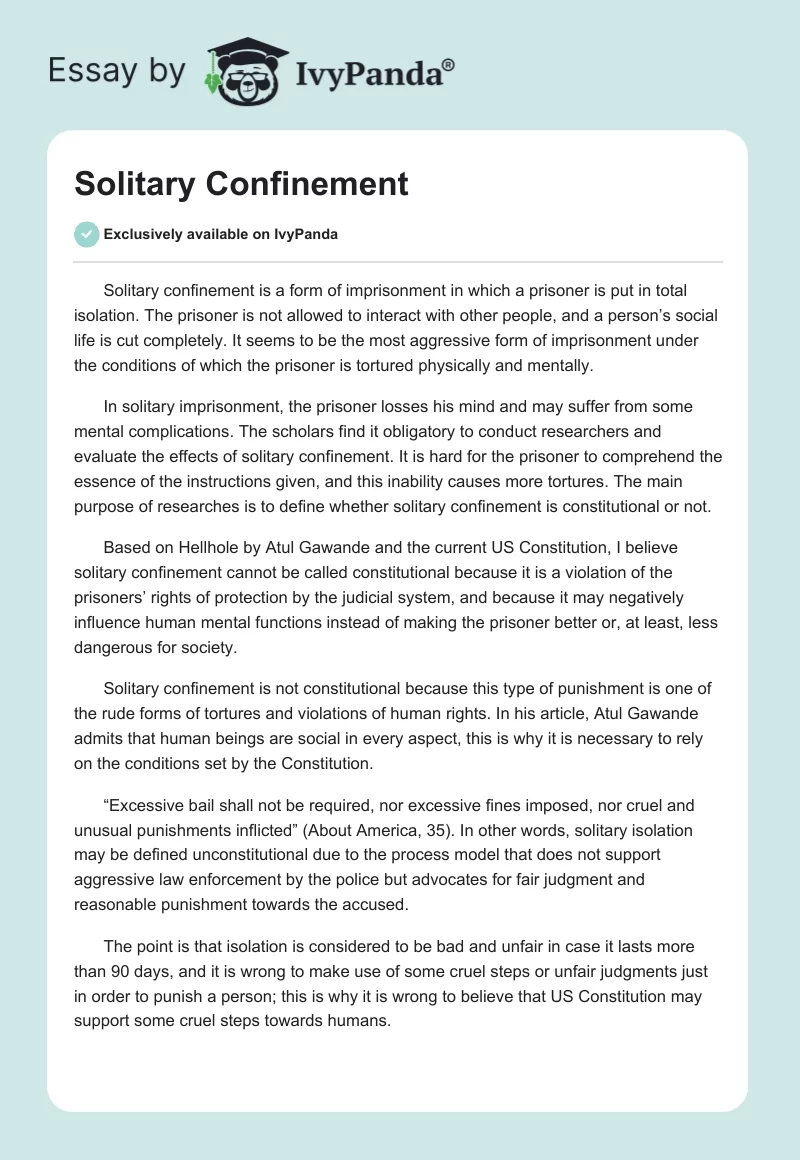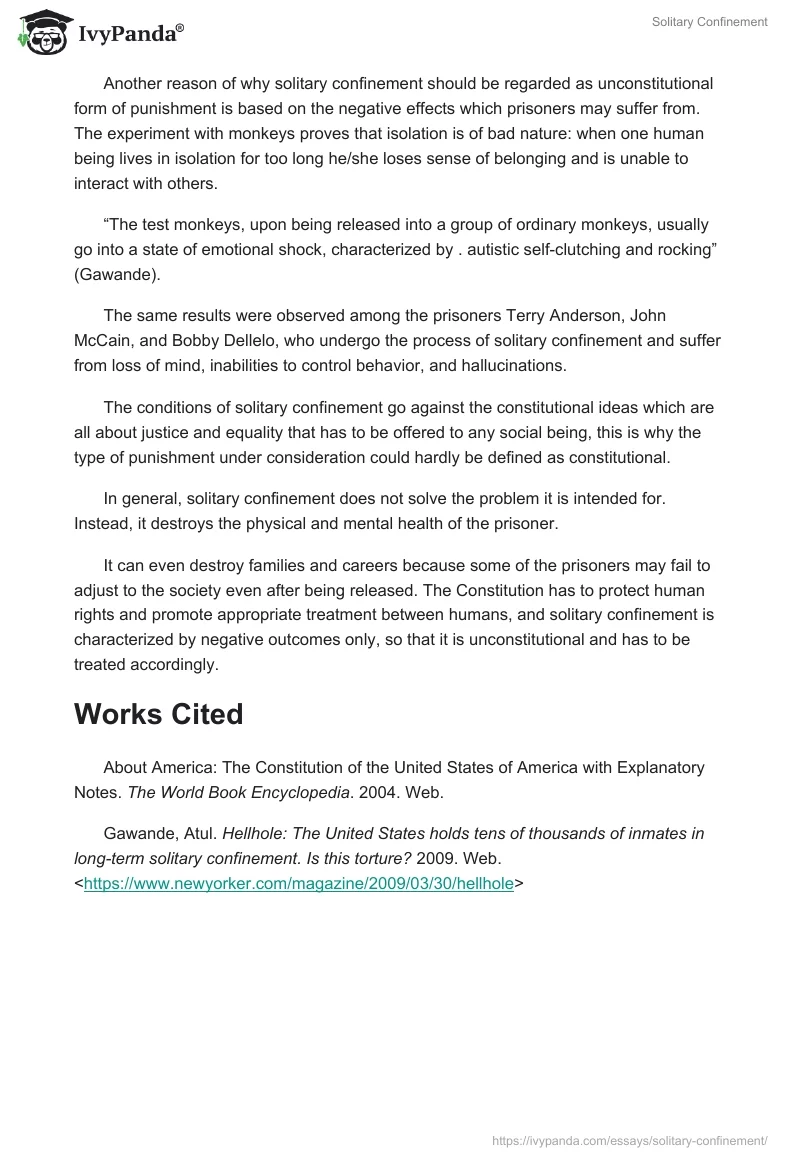Solitary confinement is a form of imprisonment in which a prisoner is put in total isolation. The prisoner is not allowed to interact with other people, and a person’s social life is cut completely. It seems to be the most aggressive form of imprisonment under the conditions of which the prisoner is tortured physically and mentally.
In solitary imprisonment, the prisoner losses his mind and may suffer from some mental complications. The scholars find it obligatory to conduct researchers and evaluate the effects of solitary confinement. It is hard for the prisoner to comprehend the essence of the instructions given, and this inability causes more tortures. The main purpose of researches is to define whether solitary confinement is constitutional or not.
Based on Hellhole by Atul Gawande and the current US Constitution, I believe solitary confinement cannot be called constitutional because it is a violation of the prisoners’ rights of protection by the judicial system, and because it may negatively influence human mental functions instead of making the prisoner better or, at least, less dangerous for society.
Solitary confinement is not constitutional because this type of punishment is one of the rude forms of tortures and violations of human rights. In his article, Atul Gawande admits that human beings are social in every aspect, this is why it is necessary to rely on the conditions set by the Constitution.
“Excessive bail shall not be required, nor excessive fines imposed, nor cruel and unusual punishments inflicted” (About America, 35). In other words, solitary isolation may be defined unconstitutional due to the process model that does not support aggressive law enforcement by the police but advocates for fair judgment and reasonable punishment towards the accused.
The point is that isolation is considered to be bad and unfair in case it lasts more than 90 days, and it is wrong to make use of some cruel steps or unfair judgments just in order to punish a person; this is why it is wrong to believe that US Constitution may support some cruel steps towards humans.
Another reason of why solitary confinement should be regarded as unconstitutional form of punishment is based on the negative effects which prisoners may suffer from. The experiment with monkeys proves that isolation is of bad nature: when one human being lives in isolation for too long he/she loses sense of belonging and is unable to interact with others.
“The test monkeys, upon being released into a group of ordinary monkeys, usually go into a state of emotional shock, characterized by . autistic self-clutching and rocking” (Gawande).
The same results were observed among the prisoners Terry Anderson, John McCain, and Bobby Dellelo, who undergo the process of solitary confinement and suffer from loss of mind, inabilities to control behavior, and hallucinations.
The conditions of solitary confinement go against the constitutional ideas which are all about justice and equality that has to be offered to any social being, this is why the type of punishment under consideration could hardly be defined as constitutional.
In general, solitary confinement does not solve the problem it is intended for. Instead, it destroys the physical and mental health of the prisoner.
It can even destroy families and careers because some of the prisoners may fail to adjust to the society even after being released. The Constitution has to protect human rights and promote appropriate treatment between humans, and solitary confinement is characterized by negative outcomes only, so that it is unconstitutional and has to be treated accordingly.
Works Cited
About America: The Constitution of the United States of America with Explanatory Notes. The World Book Encyclopedia. 2004. Web.
Gawande, Atul. Hellhole: The United States holds tens of thousands of inmates in long-term solitary confinement. Is this torture? 2009. Web.


